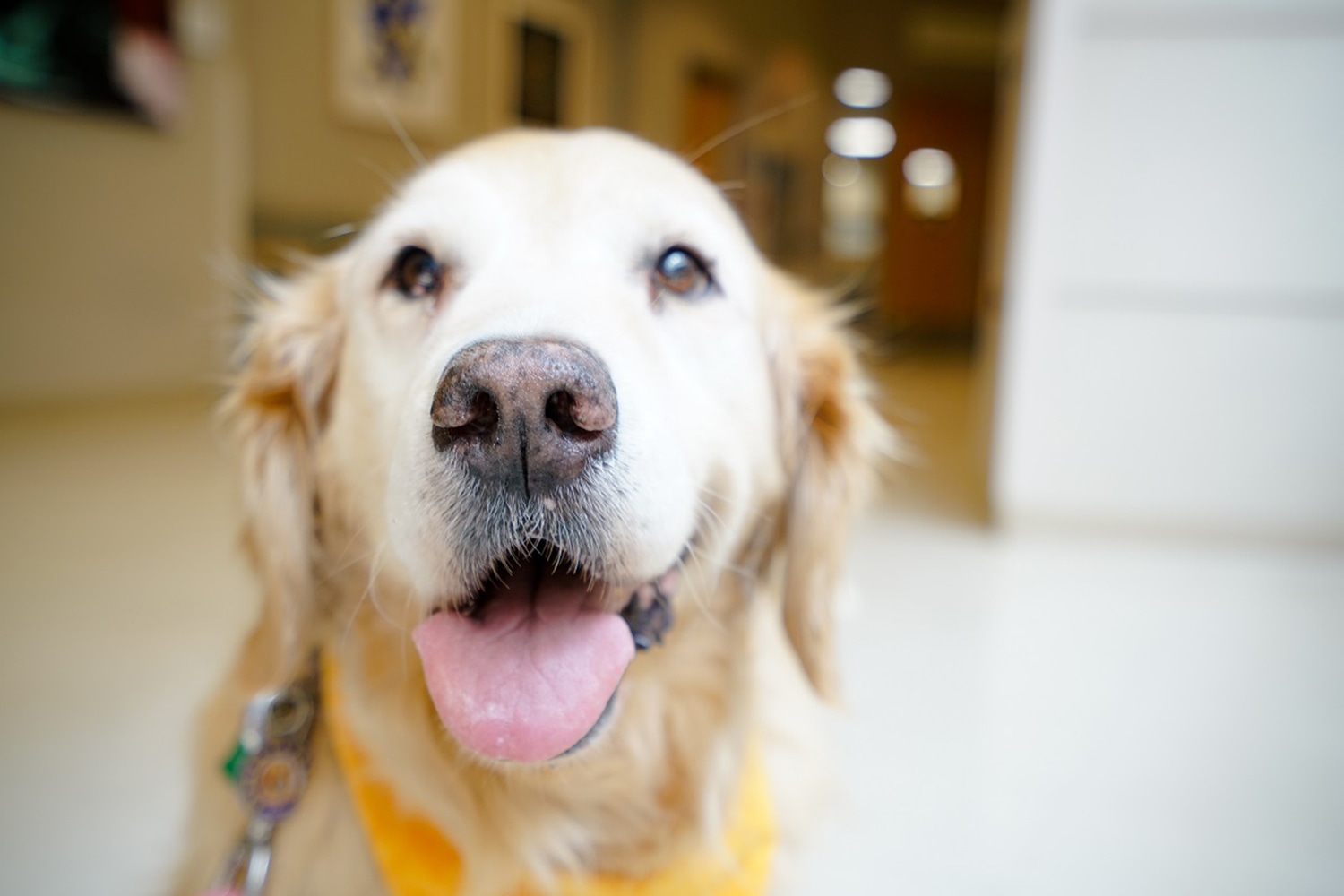Murphy, a Portuguese water dog and certified therapy dog, made a friend when he started visiting a young boy with stage IV glioblastoma in 2016. Murphy met the youngster through the pet therapy program at Roswell Park Comprehensive Cancer Center in Buffalo, New York.
As the boy grew sicker, Murphy’s owner Michelle Sharf—a former oncology nurse who became a pet therapy volunteer three years ago—brought Murphy to visit him regularly. One day, Sharf knocked at his door to find doctors surrounding the boy. She apologized and told them that she and Murphy would come back later. No, the doctors told Sharf. They would come back later.
“Literally, all the physicians left the room so that we could spend time with the boy,” Sharf says. “They realized how important it was because they saw him light up as soon as that door opened.”
Therapy dogs and their handlers have visited hospitals for decades, and hospital staff and patients attest to their benefits. Researchers are now exploring the effects of these animals in cancer care.
One study, published in the Journal of Community and Supportive Oncology in January 2015, focused on 37 patients undergoing combined radiation and chemotherapy for head and neck cancers. Every patient received a visit from a therapy dog in the radiation waiting area, chemotherapy suite or hospital room before each treatment. Throughout the study, patients completed surveys regarding their quality of life. As patients experienced the onset of treatment side effects—including pain, fatigue, skin lesions and the inability to eat or speak—they reported that their physical well-being and daily functioning abilities decreased, as expected. However, compared to what would be anticipated for patients with similar declines in physical well-being, the patients had relatively high emotional well-being as their treatments progressed. And the patients’ sense of social well-being—a measure of how patients feel about their relationships with family and friends—increased over the course of the study.
Since the study had no control group that didn’t see therapy dogs, it’s hard to tell if the animals caused the patients’ improvements. But many patients attributed their positivity to their visits with the dogs. Researchers asked them if the companionship would have been as effective if the visits had been from people alone. One patient noted that she valued her interactions with the dogs’ owners, but added, “People couldn’t have just come alone without their dogs—that would have been awkward and silly.” Several patients requested that their visits with the dogs continue after the study ended.
Another study, published in the May 2018 issue of the Journal of Pediatric Oncology Nursing, found that there were no significant differences in anxiety or quality of life between pediatric cancer patients who were randomly assigned to either receive therapy dog visits or not. However, parents of pediatric cancer patients who received visits from the dogs did tend to have reduced parenting stress. These parents also appeared to have better communication with their children about their disease and with medical staff about their care.
“All of our pets provide so much comfort in our lives outside of the hospital that having a safe way to provide similar comfort inside the hospital is really important,” says Lexie DeLone, a child life specialist who started a pet therapy program in the pediatric outpatient oncology clinic at the Johns Hopkins Kimmel Cancer Center in Baltimore. DeLone is a researcher in an ongoing study at Johns Hopkins into the effects of pet therapy programs on both the patients and the dogs in pediatric cancer units.
To ensure patient safety, hospitals have protocols for animal-assisted therapy. Dogs must be certified as therapy animals—earning certifications from groups like Pet Partners or Therapy Dogs International. Certification requires that dogs be trained not to react to the beeps of machines or the sight of IV poles. To prevent germs from spreading, the dogs must be freshly bathed and are restricted to certain areas of hospitals and to patients who do not have a suppressed immune system.
While research continues into the effects of dog therapy, the animals continue to have an impact in hospitals. With so many cancer patients having—and missing—their pets at home, these dogs can fill a void, says Ryan St. Louis, assistant coordinator of volunteer services at Roswell Cancer Center.
“We have 13 dogs in our program, and they’re our patients’ substitute dogs,” he says. “If you’re a dog lover, dogs relax you. Our therapy dogs are not only here to help patients relax, but to give them five minutes of normalcy in their lives, of playing with a dog like they do at home.”
Cancer Today magazine is free to cancer patients, survivors and caregivers who live in the U.S. Subscribe here to receive four issues per year.





